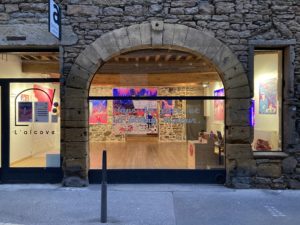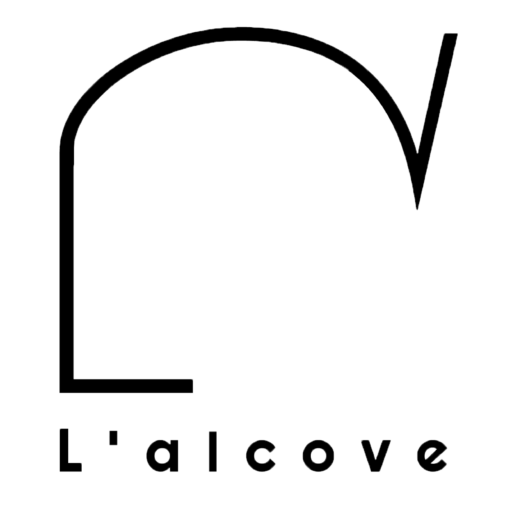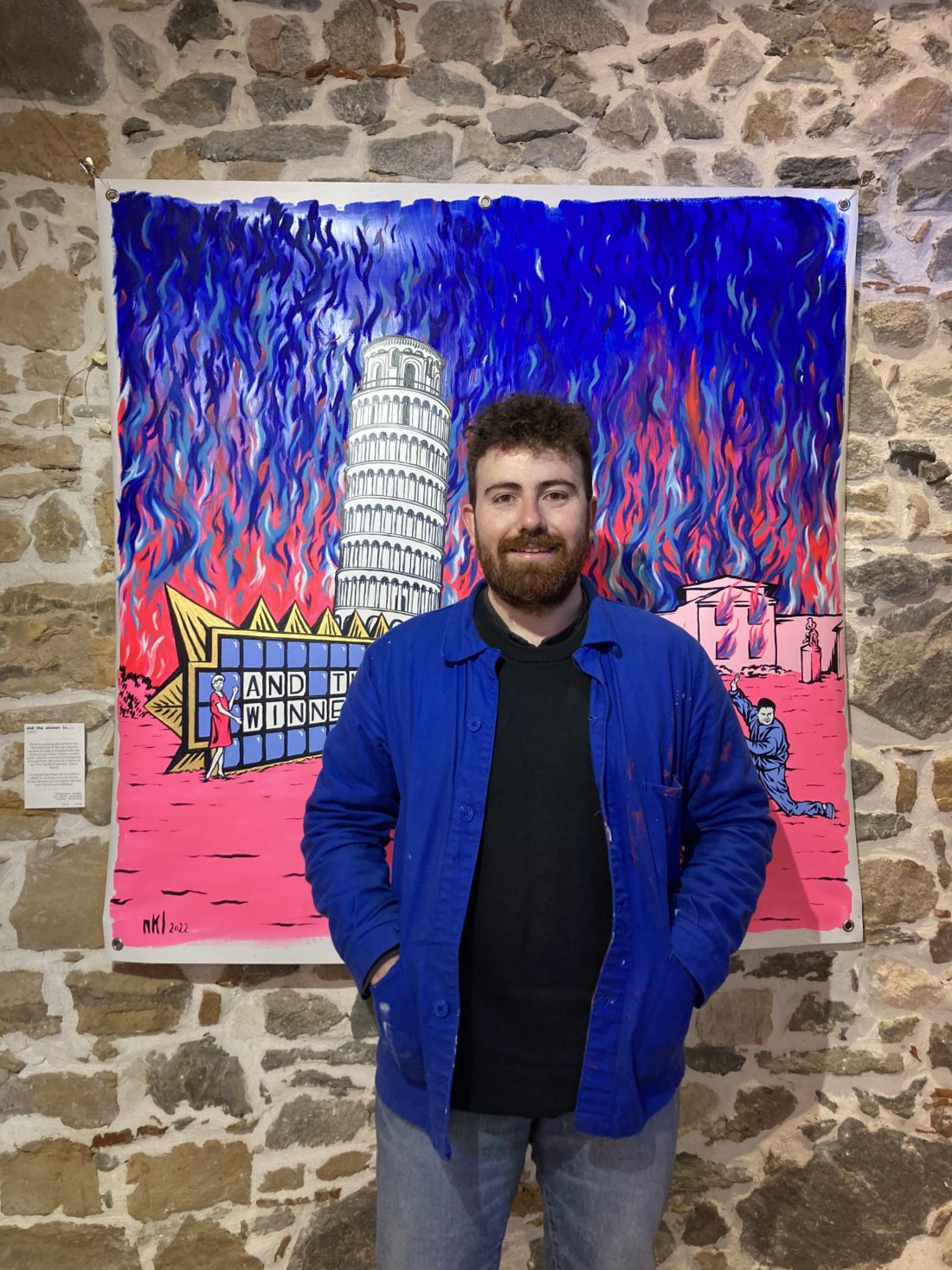A look back at NKL – Nicolas Badout‘s exhibition,
“dans la joie et la bonne humeur“
- The exhibition “dans la joie et la bonne humeur.” proposes a vision of the future of mankind: what is the power of irony and satire in the face of the world’s pressing problems?
For me, derision and humour are a means of survival.
Since I was born, 30 years ago, I have become accustomed to seeing the state of the world around me worsen: between global financial crises, wars, attacks, the degradation of the welfare state, the rise of fascism in France but also in the world, pandemics… not to mention our most serious problem to date, the climate crisis, the concrete effects of which we have already been seeing for a number of years now, no matter what a certain President says. I grew up knowing that every day would be less bad than the next.
That’s why I started this series of paintings for this exhibition: I wanted to talk to the public about our world, its problems, our finitude, but also and above all about our humanity, our shortcomings and our qualities. And irony and satire allow me both to make people laugh (I hope so!) but also to convey a message, that we should stop taking ourselves too seriously and instead take care of the world around us, stop mutilating it for personal enrichment and comfort.
It is in this way that humour, a universal language, can lead each of us to reconsider things and our relationships. The images I propose are sometimes playful, sometimes violent, but I assume that they are a reflection of our world.
- In your work we often see post-apocalyptic landscapes, buildings and structures transformed by human action. What is the relationship between the lives of individuals and the city they live in?
I like to show what we can no longer see. No longer see because we will no longer be here, individually because at some point our life stops and continues around us; and collectively because with the climate crisis all scenarios are possible: the end of humanity, the precarious survival of the last representatives of our species underground, or a Hollywood scenario where humanity manages to escape the Earth on board a spaceship!
Humanity shapes cities, buildings, and ultimately it is what will remain of us, almost intact or partial, buried under the dust that future archaeologists will excavate. What trace will we leave?
- Your images offer several references to current events: where do you find the inspiration, and what is your research method?
To imagine my paintings, I base myself on my daily life. That is to say, like everyone else, I consult news sites, I scroll through social networks, like everyone else, I watch films on streaming platforms, like everyone else, I go to Wikipedia, I buy online, etc. In the end, it’s these mundane experiences that are inspirations for me. I find: terrible news, internet memes, shocking, dirty, sensual, gory, beautiful images and photos. To this, I couple an observation of our world: I lift my head from my smartphone and look around me. The beauty of people, landscapes, the city, nature. All this is the basis of my work and in this sense my paintings are just reflections of our world.
In the end I compile photos and then make digital montages, which are sketches for my paintings, by associating various images between them.


